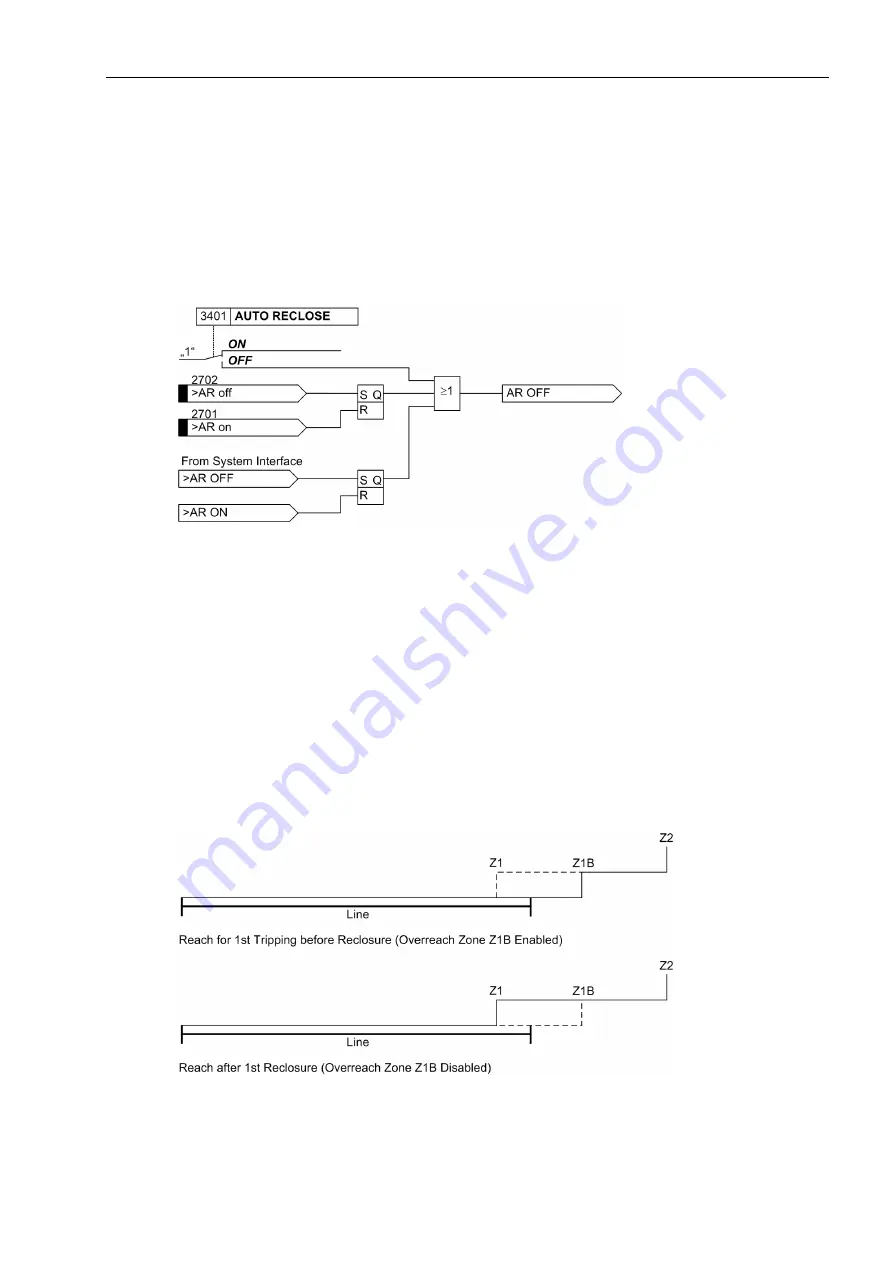
Functions
2.17 Automatic Reclosure Function (optional)
SIPROTEC, 7SD5, Manual
C53000-G1176-C169-5, Release date 02.2011
319
Activation and deactivation
The automatic reclosure function can be switched on and off by means of the parameter
3401
AUTO RECLOSE
via the system interface (if available) and via binary inputs (if allocated). The switch states are saved internally
(refer to Figure 2-157) and secured against loss of auxiliary supply. Basically, it can only be switched on from
where it had previously been switched off. To be active, the function must be switched on from all three switch-
ing sources.
Alteration of the switching state via setting or system interface is not possible during a running fault.
Figure 2-157
Activation and deactivation of the auto-reclosure function
Selectivity before reclosure
In order for the automatic reclosure to be successful, all faults on the entire overhead line must be cleared at
all line ends simultaneously — as fast as possible.
This is the usual case in differential protection schemes because the strict selective zone definition of the pro-
tected object by the current transformer sets always allows non-delayed tripping.
In the distance protection, for example, the overreach zone Z1B may be released before the first reclosure.
This implies that faults up to the zone reach limit of Z1B are tripped without delay for the first cycle (Figure 2-
158). A limited unselectivity in favour of fast simultaneous tripping is accepted here because a reclosure will be
performed in any case. The normal stages of the distance protection (Z1, Z2, etc.) and the normal grading of
the other short-circuit functions are independent of the automatic reclosure function.
Figure 2-158
Reach control before first reclosure, using distance protection
















































